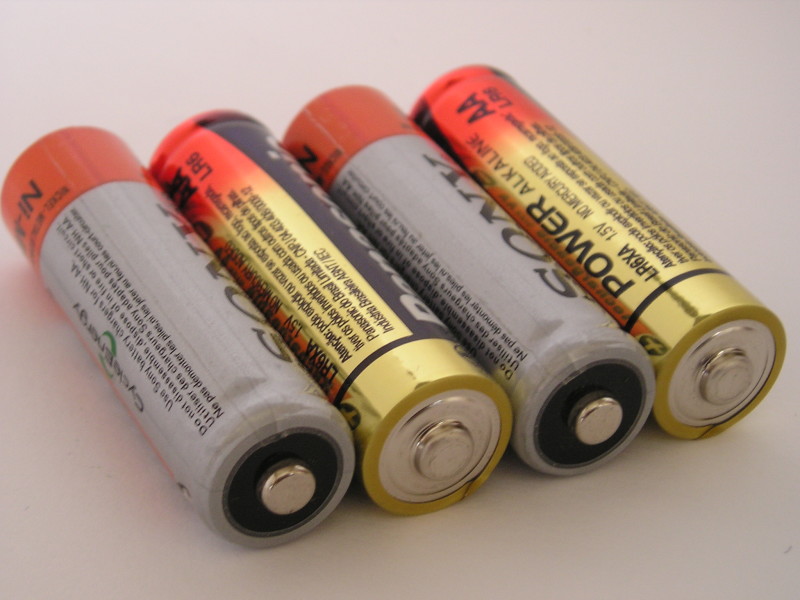The following is a brief breakdown of how batteries of different chemistry are physically recycled at the end-site recycling plant.
Lead Acid Battery Recycling
The battery is broken apart in a hammer mill; a machine that hammers the battery into pieces. The broken battery pieces are then placed into a vat, where the lead and heavy materials fall to the bottom and the plastic floats. At this point, the polypropylene pieces are scooped away and the liquids are drawn off, leaving the lead and heavy metals. Each of the materials goes into a different recycling “stream”.
Plastic
Polypropylene pieces are washed, blown dry, and sent to a plastic recycler where the pieces are melted together into an almost liquid state. The molten plastic is put through an ext ruder that produces small plastic pellets of a uniform size. The pellets are sold to a manufacturer of battery cases and the process begins again.
Lead
Lead grids, lead oxide, and other lead parts are cleaned and heated within smelting furnaces. The molten melted lead is then poured into ingot molds. After a few minutes, the impurities float to the top of the still molten lead in the ingot molds. These impurities are scraped away and the ingots are left to cool. When the ingots are cool, they’re removed from the molds and sent to battery manufacturers, where they’re re-melted and used in the production of new batteries.
Sulfuric Acid
Old battery acid can be handled in two ways: 1) The acid is neutralized with an industrial compound similar to household baking soda. Neutralization turns the acid into water. The water is then treated, cleaned, tested in a waste water treatment plant to be sure it meets clean water standards. 2) The acid is processed and converted to sodium sulfate, an odorless white powder that’s used in laundry detergent, glass, and textile manufacturing.
Alkaline/Zinc Carbon/Zinc Air Batteries
These batteries are recycled during steel making processes, where they’re placed in a molten mill furnaces as a feed-stock. The zinc from the batteries is fumed off into a vacuum bag-house for recovery, while the end metal product is used to make low-grade steel (i.e. rebar)
Nickel-Cadmium, Nickel Metal Hydride, and Lithium Ion Batteries
These batteries are recycled via a High-Temperature Metal Reclamation (HTMR) process, during which all of the high temperature metals contained within the battery feed-stock (i.e. nickel, iron, cobalt, manganese, and chromium) report to the molten-metal bath within the furnace, amalgamate, then solidify during the casting operation. The low-melt metals (i.e. zinc, lithium, and cadmium) separate during the melting operation and are collected as a metal-oxide.
Lithium Batteries
The contents of the batteries are exposed using a shredder or a high-speed hammer depending on battery size. The contents are then submerged in caustic (basic not acidic) water. This caustic solution neutralizes the electrolytes, and ferrous and non-ferrous metals are recovered. The clean scrap metal is then sold to metal recyclers. The solution is then filtered. The carbon is recovered and pressed into moist sheets of carbon cake. Some of the carbon is recycled with cobalt. The lithium in the solution (lithium hydroxide) is converted to lithium carbonate, a fine white powder. What results is technical grade lithium carbonate, which is used to make lithium ingot metal and foil for batteries. It also provides lithium metal for resale and for the manufacture of sulfur dioxide batteries.
Mercury Batteries
The batteries and heavy metals are recovered through a controlled-temperature process. It’s important to note: the percentage of mercuric oxide batteries is decreasing since the passage of the Mercury-Containing Rechargeable Battery Management Act (The Battery Act) of 1996. This act prohibits, or otherwise conditions, the sale of certain types of mercury-containing batteries (i.e., alkaline-manganese, zinc-carbon, button-cell mercuric-oxide and other mercuric-oxide batteries) in the United States.
Battery recycling information on the Battery Solutions website.
Battery Recycling
